Have you dreamed of extending your growing season to be year round? Building a custom greenhouse kit is a great way to add both value and practicality to your yard. But you want to ensure the conditions are right to get the most out of it. For that reason, you should survey your backyard and make a few preparations before getting your greenhouse kit. Here’s how to prepare your backyard for a deluxe greenhouse.
Freestanding Greenhouses
The first thing you should understand is that a deluxe greenhouse can either be an attached or freestanding greenhouse. This is significant because you’ll likely see “attached” greenhouses when browsing greenhouse kits. These are greenhouses that connect as direct extensions to your home and are often referred to as lean-to greenhouses. Attached sunrooms and lean-tos are much smaller and are often more limited in space and may not be the best solution for you. In contrast, freestanding greenhouses are larger and often come with more flexibility to be built wider and longer.
Ground and Soil Conditions
Before you start building, you’ll want to survey the soil of your backyard to make sure it can provide a solid foundation for your greenhouse to rest on. As such, the most ideal soil will be compact and firm and will allow you to make the cheapest option of securing four posts at each corner of the frame with concrete. You can be sure the concrete will solidify nice and level. During this process, the frame may need extra support while the concrete sets. A benefit of a soil base with concrete-secured leg posts is that you’ll be able to plant directly into the soil inside your greenhouse. This is because these ideal soil conditions provide very good drainage. However, the downside is that the frame could potentially subside and warp, allowing extra moisture or rodents to get into your greenhouse. To keep rodents from entering your greenhouse, lay down galvanized mesh wire on the outside the foundation’s edges.
If your backyard isn’t level or has a slope, you’ll need to build up the soil and compact it yourself to provide a firm base. To do this, you’ll need either a roller or a vibrating plate. Both of these are typically accessible from tool-hire businesses in your local area.
Greenhouse Orientation
The next part of preparing your backyard for a deluxe greenhouse is deciding its orientation. Most greenhouses in North America face directly south or southeast. This is because, in the winter, it’s incredibly important that your greenhouse is able to capture the early morning sun to make up for the lesser heat and daylight. If a south-facing greenhouse isn’t an option in your backyard, an east-facing greenhouse is also viable. You may just want some glazing with south-facing exposure.
While not directly related to preparing your backyard, it’ll be crucial to consider the orientation of your greenhouse to ensure that your backyard can provide an adequate amount of space and determine what locations will be the most viable.
Gravel Base
The most affordable way to build a foundation base for a greenhouse smaller than 12 feet x 16 feet is to create a basic gravel foundation with a treated timber mudsill. The mudsill attaches to the greenhouse frame. To build this foundation type, dig a trench approximately 8 inches wide down to a depth of 6 inches below the bottom of the mudsill. Use a 1-inch galvanized water pipe secured into the ground about 2 feet to stake the treated timbers to the ground. You can then attach the water pipe to the treated timbers by drilling a hole and lag bolting it to the timbers. Pipe straps work well too. These pipes should be on the inside edge of the foundation.
Perimeter Base
If your greenhouse exceeds 10 feet x 14 feet, the next option is to create a perimeter that provides a solid base for your greenhouse. This perimeter base can consist of poured concrete or concrete blocks—both are equally viable as a solid foundation. Before you begin construction of the perimeter, you’ll want to make some visual markers on the ground to help guide the process. In particular, check the size of the base first and mark out the outline using spray paint.
While traditional perimeter bases are underground, it’s equally viable to build your perimeter base above ground to save yourself from the trouble of digging out the area. Ensure you firmly fix the slabs or blocks you use with a cement mixture that will solidify the base. This cement mixture is especially vital because if you just use loose paving blocks on top of sand, the sand will eventually wash away. From there, your foundation will become unstable. No matter what you choose, you will need to fix your greenhouse base to slabs of concrete with heavy-duty screws.
This option is cost effective and provides a reliable, solid structure. The center, if you desire, can still be soil to plant into. Or you can gravel over it for a neat look. Your perimeter base will keep the gravel in place and still allow water to drain through the floor.
Paving Slabs
Paving slabs are the most decorative type of base that doesn’t sacrifice any practicality. Beautiful to look at and easy to maintain, paving slabs and blocks are often preferable for grow bags or pots inside the greenhouse. These slabs or blocks are also incredibly resilient and will last you for many years to come when you lay them properly.
Thanks to the cracks between the paving slabs, cleaning them is relatively easy. The cracks are easy to clear of debris. Also, the excess water will simply drain through the cracks so that you never have to worry about water pooling on the ground. Furthermore, the slabs won’t warp or subside, providing you with an incredibly solid and reliable base.
Concrete Pads
The least practical and most expensive choice is using a concrete pad. It’s convenient because it’s very easy to clean and maintain with a broom. However, due to how moist and humid the environment in a greenhouse is, a concrete slab doesn’t allow the greenhouse to breathe as effectively as a porous foundation, such as one backfilled with gravel. Mold, mildew, and funguses are likely to grow in greenhouses with excess humidity and moisture and can adversely affect the health of your plants.
If you feel that it’s absolutely necessary to build a concrete pad for your greenhouse, make sure to have drainage installed so that excess water and moisture can escape.
The biggest issue you may face is pooling water because there are no cracks or voids for the water to drain through. To solve this, you’ll just need to have drainage holes drilled into the base that water can escape into.
Conclusion
Providing a strong and sturdy base for your greenhouse is critical to your future success. When you’re preparing to construct your greenhouse, keep these options in mind. Then, consider the condition of your backyard’s soil before choosing the best base for your needs.
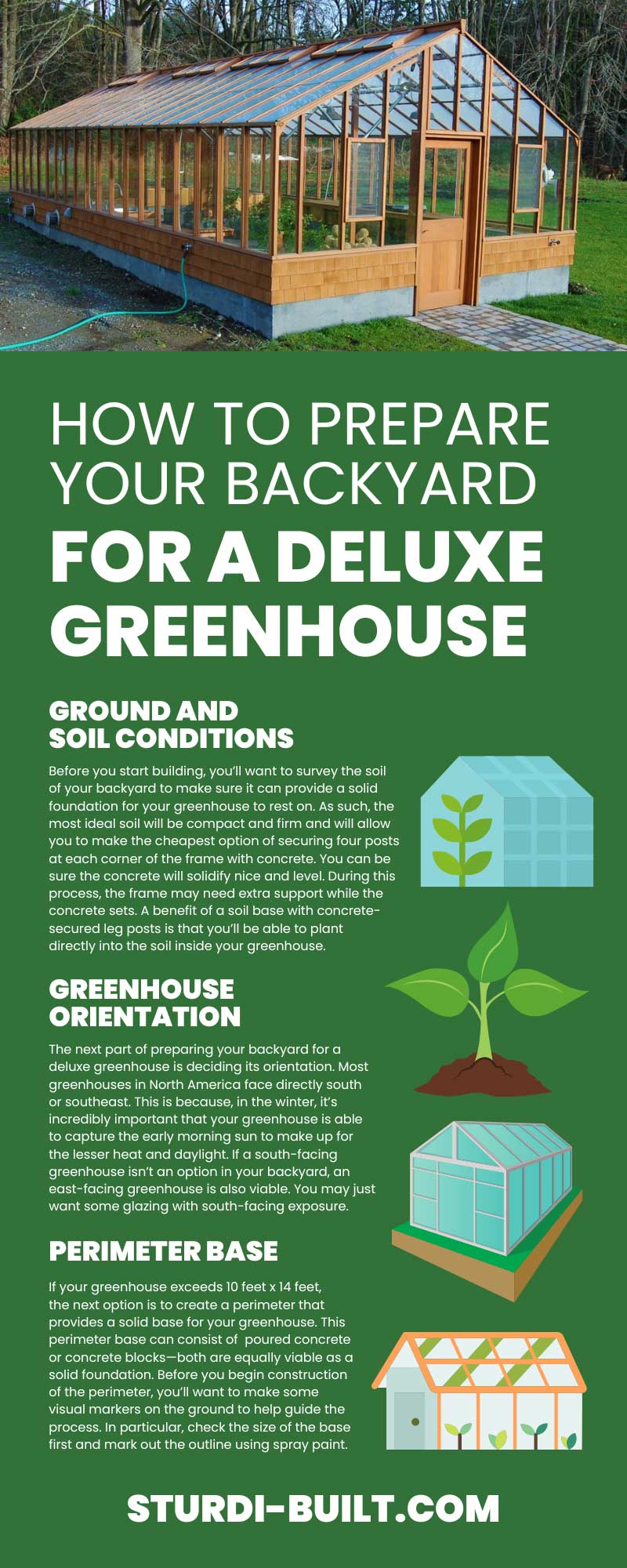





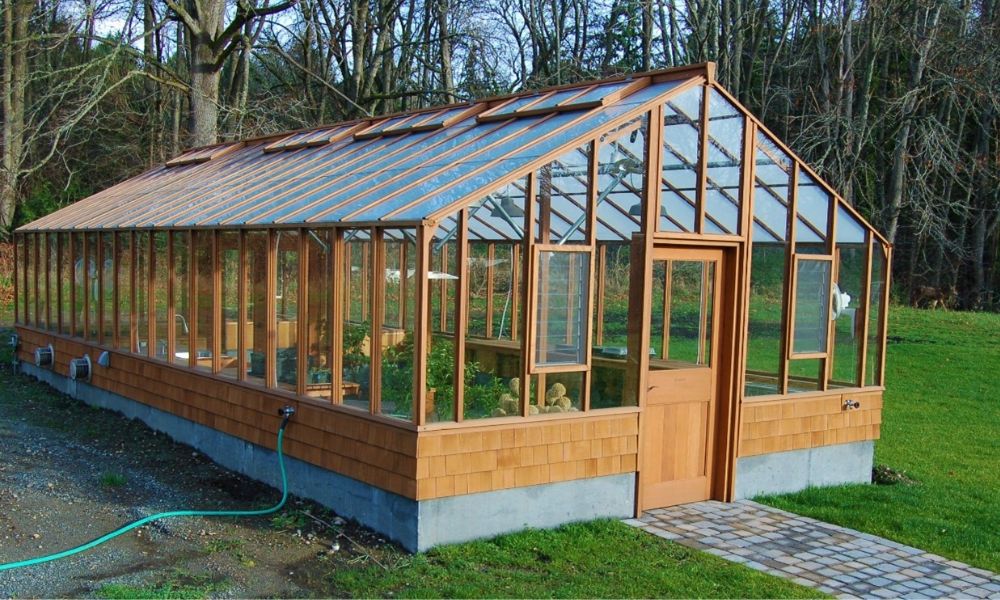
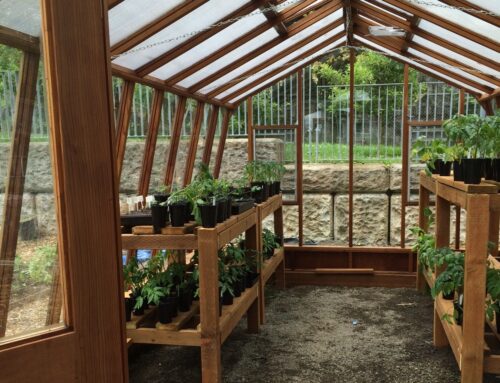
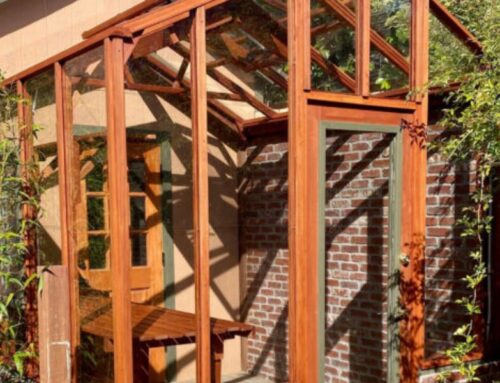
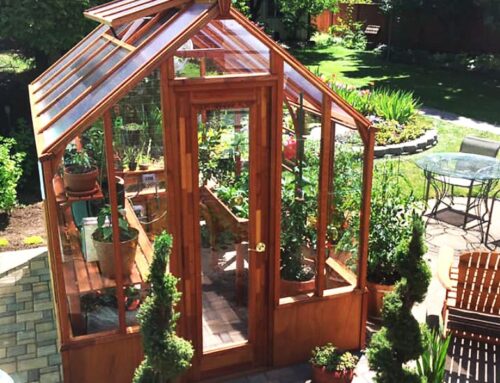
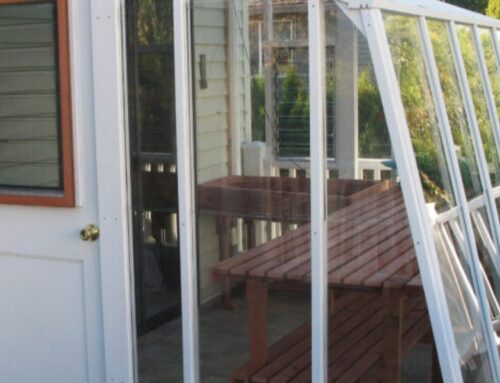
Leave A Comment